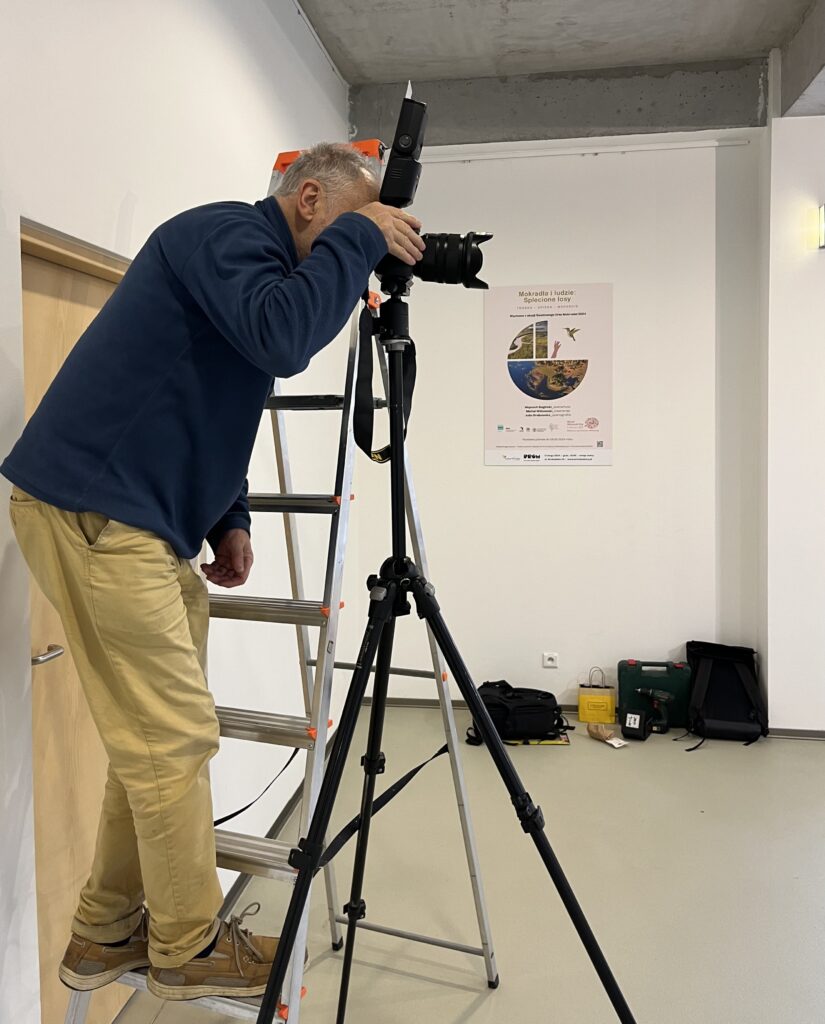Life interlaced: Wetlands and people. Exhibition on the occasion of World Wetlands Day 2024. PROM KULTURY, Warsaw, 23 Brukselska St., February 2 – 28, 2024
Exhibition on the occasion of the 53rd World Wetlands Day, Prom of Culture, Warsaw, February 2 – 28, 2024.
Screenplay: Wojciech Baginski. Query: Michal Witkowski. Set design: Julia Grabowska.

Above: “Bridge to Saska Kępa from Prague”, Karol Beyer (1818-1877) , Warsaw 1861-1863, print from collodion glass negative in the collection of the National Museum in Warsaw.
The slogan for this year’s World Wetlands Day, quoted in the exhibition’s title, encourages reflection on the condition of the natural environment broadened to include issues of memory and identity.
Saska Kępa, where we are celebrating World Wetlands Day this year, has long remained a classic example of a wetland that meets the criteria enshrined in the Ramsar Convention. However, we would not like to duplicate the colloquial opinion that the development of the city has led to the complete replacement of the sphere of nature by the sphere of culture in the area. After all, the still distinctive and unique character of Saska Kępa, compared to other Warsaw neighborhoods, does not slip the mind of the passerby.
In many scientific, literary and journalistic statements, one can encounter the proposal to treat the phenomenon of the city as a “book”, “text”, “language” and “writing”. And yet it remains at the same time a collection of organic and geometric structures, a place of existence of diverse forms of life and inanimate matter, which forms and structures remain in a constant dynamic relationship with each other. Thus, we are talking about material-semiotic space.
Henryk Drzewiecki, chief architect of the City of Warsaw in 1991-1995, wrote that “memory is what remains after an event that did not happen entirely.” In her book Post-polis: an introduction to the philosophy of the postmodern city, Ewa Rewers comments that: “Certainly, then, the operation of memory begins with the shifting of the boundary of a given event, and it is not just a temporal boundary: memory does not have to be a journey in time or space. This shift is most often called revision or forgetting.”
The exhibition on display poses the question of what could be the aforementioned event from which the individual and collective memory of Saska Kępa begins to operate. Was the formation in the riverbed of the Vistula, which had been a natural rivulet in Warsaw since the mid-14th century, of a “clump” strong enough that it was never again swept away by high flood waters? Was the contract of 1628 sanctioning the settlement of an Olêder community on a previously uninhabited part of Warsaw’s Solec, cut off by the river’s current? Was the construction at the turn of the 18th and 19th centuries of the first of a series of seasonal wooden bridges connecting the core of the area of interest here with Warsaw’s Old Praga? Or the construction in 1905-1913 of the mighty Third Bridge, now the Poniatowski Bridge, initially leading from the right bank of Warsaw only to Skaryszewski Park, but which later contributed to the creation of a neighborhood of unique character?
The only thing that is constant in these transformations is the presence of the River.


















